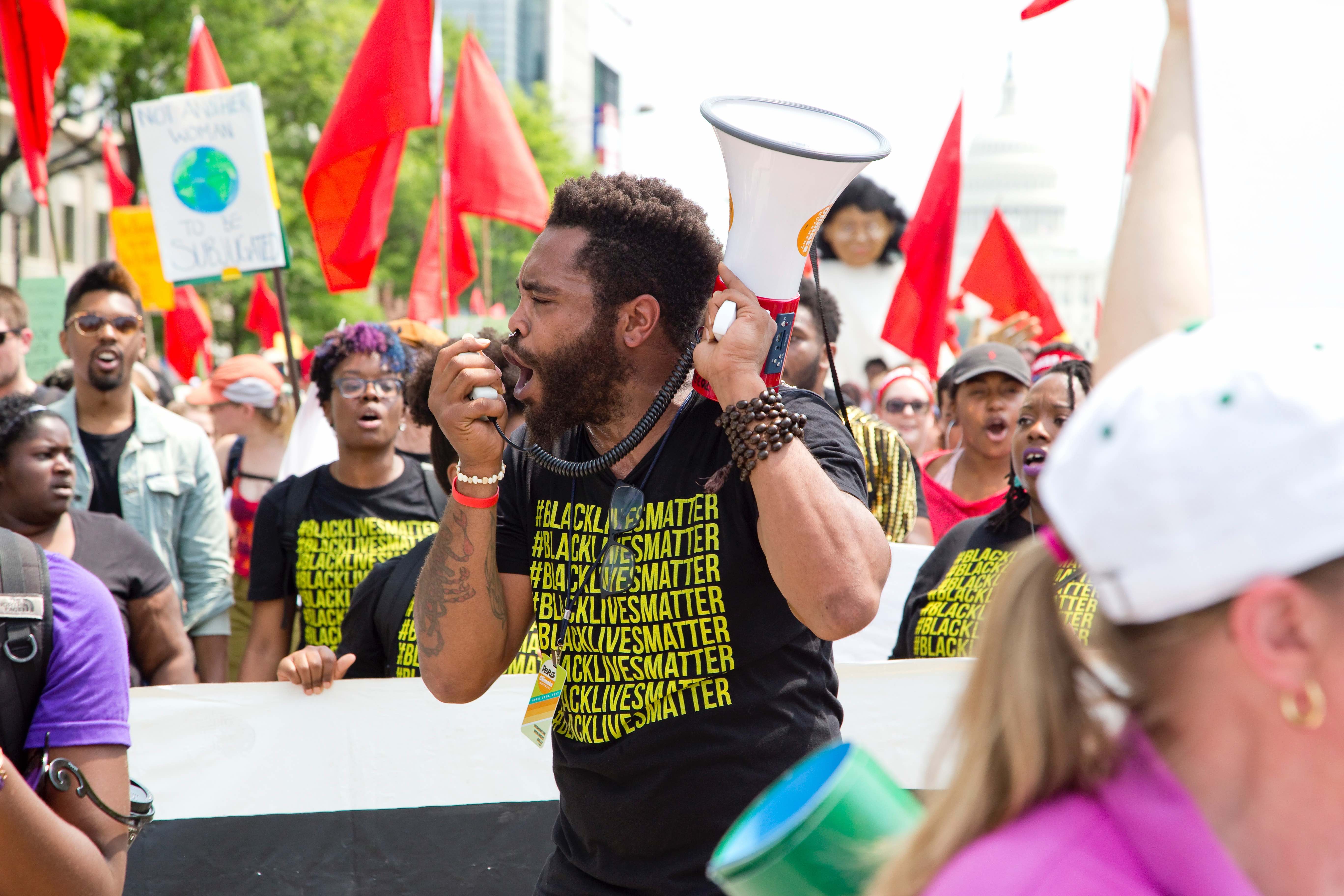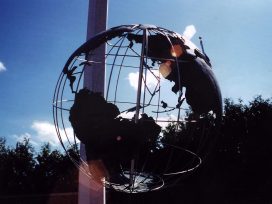‘On or about December 1910 human character changed’, the novelist Virginia Woolf wrote in one of her particularly haunting phrases. After that date, relationships between masters and servants, husbands and wives, parents and children were never the same again – at least in the England she knew. She was wrong of course. Human character does not turn on a dime. Society and social discourse are much more complex, internally divided, and inhomogeneous than that. But Woolf was on to something: a shift in the terms in which common experience is incorporated into the social imagination can erupt with major consequences out of almost unnoticed beginnings.
When historians try to periodize the twentieth century, they now point more and more often to the early 1970s as the hinge point when one phase of the twentieth-century gave way to another. This was the moment when the postwar economic boom would begin to sputter out, when inequality would intensify and broad-scale economic growth would no longer set the norm; when the institutions of world economic and political management set in place so hopefully in the late 1940s would come under increasingly severe pressure; when the Cold War global order would begin to morph into a world of much more fractured rivalry and warfare.The computer and internet would change everything after the early 1970s, driving a major intensification of economic globalization. But the early 1970s also saw the beginning of a powerful and extremely wide-ranging shift in ideas about economy, society, history, power, and human selves.
This shift in ideas was the subject of my book, Age of Fracture, in 2011. The term ‘fracture’ has travelled so far since then that it is worth emphasizing what I meant and did not mean by it. In pointing to an age of fracture, I was not trying to suggest that in the last quarter of the twentieth century society became more contentious than before. The existence of sharply divided subcultures holding fiercely to competing convictions of fact and falsehood is old in the American past. The whipsaw of economic change, carrying starkly different consequences for differently situated economic groups, is a constant in the history of capitalism. With its institutions of racial segregation in their legal death throes and white nationalism mushrooming in response, with cities going up in flames and a deeply unpopular war polarizing American politics, the United States was as starkly divided during the 1960s as in any other decade in the twentieth century.
What fractured in the last quarter of the twentieth century, I argued in my book, was a set of terms that were central to the dominant social imagination. It is common to call the middle years of the twentieth century the age of the masses, but it goes even deeper to call it the age in which the sociological imagination came into its own. To think about human behaviour in these years was to think of persons as embedded withinsociety and profoundly shaped by the institutional possibilities that society offered them. To understand economics was to begin with the macro-economy. To understand politics was to begin with the structures of state and nation. To understand human behaviour was to think in terms of social roles, socially constructed norms, and the power of history and culture. In all these ways, the ‘social’ occupied a thick and important place in mid-twentieth century social thought.
By the end of the twentieth century, the landscape of social thought had changed radically. The pressures bearing down on individuals had not in the least diminished. But, to a great extent, earlier ways of imagining self and society had broken apart. Strong notions of society receded from the forefront of language and imagination. Structures and institutions became less visible. Talk of power grew more abstract. In their place,rights-bearing, choice-making, autonomously acting individuals took centre stage in social thought.
One found these socially unencumbered actors more and more frequently and acrossmore and more domains of political and economic discourse. Historians talked less about the pressures of society and more about recovering the ‘agency’ of human actors. Economists replaced macroeconomic models with micro-economic extrapolations from the preference-satisfying choices of individual actors. Foreign policy experts imagined that history could be foreshortened, that structural regime change might be accomplished not incrementally but in the blink of an eye or the awe of an invasion. In the US, talk of rights flooded into political debates. Conservatives who had once been among the most articulate defenders of society, history and tradition became increasingly libertarian. At the cutting edge of the intellectual left, attributes once imagined to be monolithic – most strikingly, race and gender – broke up into a myriad of choices. Choice was everywhere, as if it were the most natural of human activities.
What integrated these choices and desires was increasingly conceptualized as the power of the ‘market’. This abstract and singular term emerged out of the welter of real-life markets as a noun of virtually universal applicability and almost magical power. To harness the power of market incentives to public policy became a goal beyond party differences – not only because powerful vested interests were pushing in that direction, but also because to do so seemed to more and more policy experts in this tidal shift in language and social metaphors more efficient, more rational, and more natural.
Many theorists now call this phenomenon ‘neoliberalism’, and there are advantages to the term. But there are also dangers in bundling all these phenomena under a single ideological label. Doing so implies that there was greater unity to the new modes of thinking than in historical fact existed. It tends to drive discussions toward a singular point of origin: in the anti-statist figures of the Mont Pèlerin Society in the late 1940s; or a ruling class worried about its eroding profit margins; or the functional needs of late capitalism itself.
In fact, this shift in the dominant social imagination had a plurality of beginnings. One of the most significant was the paradigm fights within the economics profession. It was out of these, far more than anything that Friedrich Hayek or Milton Friedman wrote, that the new choice-theoretical models of economic and social analysis unrolled with extraordinary vigour. A second impetus came, quite independently, from the student movements of the 1960s. Although initially launched in languagesof collective power and consciousness, these movements ultimately served to breathe a new libertarianism into political culture.
Some of the shifts in the social imagination were witness to the growing power of finance capital. In US law, the reinvention of the corporation as nothing more or less than the agent of those who profit from gains in its share values transformed one of the most deeply entrenched economic institutions of the mid-twentieth century into an investment property. The synchrony between the information and data processing powers of the modern computer and a vastly expanded, global market in goods generated far more choices of what to consume than human beings had ever possessed before.
The consequence of these events was not to implant a new, dominant ideology on the times whose inner logic we can map out as on a dissection table. Rather, for a significant part of the world’s population, it was to propel a shift in the dominant metaphors of the social imagination. Core to this dynamic were moments of contradiction when older paradigms failed and people flailed about for new modes of explanation. These in turn were amplified by the forces of diffusion, as attempts to regain an ideational hold on the world bled into one another, outran their initial contexts to affect ideas and arguments in far-away domains, and shifted the stock of available models and social metaphors. Puzzlement, contagion, and instantiation in institutional practices are what move the social history of ideas. The language of ‘society’ had itself emerged in this way in the early twentieth century, from many sites and across many deep social and political divisions. And this was the way the language of the social began to unravel toward the century’s end.
Age of Fracture examined a cluster of these shifts in depth. It traced the ways in which economists abandoned macro for micro models, the ways in which languages of power grew more encompassing but also thinner and more detached from history and institutions, how the solidaristic languages of the early feminist and black power movements fell apart into a multiplicity of chosen identities, how time became foreshortened, how rights language became increasingly contagious, and how the choosing, rights-holding, market-acting person ultimately emerged as the dominant metaphor for the infinitely complicated thing we call the self.
My point was not to suggest that these shifts in ideas causedthe structural transformations that reshaped global politics and economics in the last quarter of the twentieth century. Rearrangement of the dominant stock of metaphors did not in itself set in motion the accelerated global mobility of capital, goods, and populations detached from fixed place and deep social relations that mark our current moment. What the shifts in ideas did was to normalize those forces of political and economic change so that they became harder to see except as the natural workings of economy and individual desire.
In 2011, when Age of Fracture was published, I thought the transformation it described was all but complete. The older solidaristic language had been largely disempowered. But I was clearly wrong. Since 2011 we have witnessed an avalanche of efforts to reconstitute the social. Nationalism is everywhere on the rise. Claims of ethnic and racial solidarity have swollen in force. New and emotionally fraught lines have been erected between insiders and outsiders: the ‘people’ and the ‘others’ in their midst or pressing for entry at their gates. Some of these movements of political solidarism have erupted where we might have expected them. National solidarities of all sorts quickly reconsolidated after the breakup of the Soviet Union, as they did in the Islamic world after the collapse of the Cold War dualities that had helped keep nationalist autocrats in place. But now we also see the force of similarly intense solidaristic politics in the United States and western Europe as well. A form of the social is back with a vastlyangrier face than it wore before.
In the US, the phenomenon has been explored by social-anthropologists with particular intensity, and what those studies have shown is the power of resentment that lies behind them.
Donald Trump voters came in many varieties. But central to a critically important part of his electorate was anger at the immigrant work seekers, crisis-driven refugees, global economic competitors, and advantage-seeking capital investors, all uprooted from place. It was anger at the sort of mobile, choice-making individuals who have occupied so strong a role in the recent social imaginary.
In the United States and other parts of the developed world, the global economy threatens jobs. But equally, it threatens the status and self-worth of those who do not see choices in what is meted out to them. They therefore lash out at free trade, even when it benefits them. They lash out at outsiders, immigrants and internal minorities, even when those groups are nowhere close at hand. They lash out at the elites, the parties in power, the institutions of governance in Washington DC or Brussels that seem so distant from their experiences and concerns, and so uninterested in their voices.
They grasp at a language of solidarity. In the US, they take energy from the mass rallies that Trump has engineered so skilfully and then take their angers home. They call themselves the real America (or the real France, or Germany, or Italy), but their very furore suggests that they are not so certain that their claims are still valid, or that they have a secure foothold on the political stage. They are the backlash against the Age of Fracture.
What this eruption of anger portends for the future, however, is not so clear. No single mode dominates the backlash of our times. Viktor Orbán’s Hungary is not Trump’s United States. The populist and pseudo-populist movements of our day spring out of related conjunctures but they are not clones of each other. In some circumstances, authoritarian regimes that prove able to harness this sense of betrayal and anger will prevail. They have already done so in many parts of the world, riding on waves of xenophobia, pseudo-ethnic solidarity and distrust. They proudly announce their antiliberalism, their fierce animosity to cultural pluralism, their lust for unified state, nation and power.
For what it is worth, in Trump’s United States the possibilities of a truly authoritarian regime seem to me remote. There is a much longer history of democratic pluralism in the United States than in central Europe; there are firmer systems of checks and balances in place. Trump exists as as a figure of almost negative charisma. He does not pull his voters into his own unstable projects and mercurial visions so much as he reflects back, in ferociously amplified terms, the slogans they respond to. The incoherence of the Trump project and the power of his voters’ self-projection onto the Trump phenomenon are extremely tightly linked. That makes for an energized electorate but only provides a fragile foundation for a thorough-going authoritarian politics.
In our concern about rising authoritarian tendencies, moreover, we should not discount the opposite dynamic: the remobilization of an engaged civic politics marked by a more progressive, more democratic vision, and less all-consuming anger. In the United States we see this in the Bernie Sanders phenomenon, but even more clearly in movements with still deeper roots in civil society: the women’s marches, the MeToo movement, the March for Our Lives, the Black Lives Matter protests. Together, these speak to a reconstitution of the social imagination in quite different terms than the language of resentment.

Black Lives Matter Protestor. Washington, United States. Photo source: Unsplash
The arena for a progressive recovery of the social has more typically been local rather than national. A sense of location was critically important when progressive politics began at the end of the nineteenth century. Its most generative sites were the cities where the press of society, the exploitative power of unregulated capital, and the corruption of politics were most closely entangled. Social politics moved up from local settings to national policy rather than filtering down. One sees parallels in our own time in the way that the tech hubs of California and Europe have begun to reimagine themselves as laboratories for the future, independent of whatever the politics of parliament or Congress may be. It is an incomplete move. But they are as real an alternative to the current sense of fracture as the dystopian models we see in Hungary or Poland.
And yet the most likely future seems to me neither the triumph of the voices of rightwing solidarism or a victory for leftwing civic action. In the United States and perhaps elsewhere the most potent vectors of change may be pointing toward still further political disaggregation. Political party breakdown has accelerated. This may yet fracture the two-party political system in the United States. Negative voting is on the rise. We will see more amateurs in politics, figures like Trump and Macron who present themselves as persons wholly of their own creation, detached from the taint of any pre-existing institutions. They will magnetize voters for a moment and then disillusion them. We will see more pop-up political parties. We may see more virtual parties along the lines of the Five Star Movement springing into life on the internet. We will see more politics-by-referendum, swinging back and forth between the polar choices that referenda pose.
For if politics is imagined essentially as a system of deliberation, a complexly institutionalized way of trying to work out policy through the give-and-take of compromise, coalition making, popular election, and institutional checks on those popular results, then some sense of the common good and social welfare is essential. But if politics is essentially about choice, about the act of registering a preference, then the processes of deliberation are frustrating and produce resentment. From such a perspective, party loyalties are merely instrumental: one signs on to party affiliation and then signs off again from election to election. Expertise diffuses: every side mobilizes its expert endorsers to swear for its version of fact and effectiveness. Belief in truth does not disappear under such circumstances. Rather, as the bidders for truth-telling status multiply and diffuse, truth becomes pluralized. Truth becomes marketized, as does politics.
If this is the trend of our moment, it harbours a future of continued political fracture both of institutions and political vision. It heralds a splintering of parties, a weakening of the politics of grand coalition, sharper policy swings, and more policy incoherence. Regime change will come more quickly. Long-range planning will become more difficult. In all these ways, a politics in which choice occupies the highest seat of privilege will come more and more to resemble a market – fluid, quick to respond, punctuated by bubbles and fads, filled with advertisement and self-advertisement, where everyone has a preference but the market ‘decides’ the outcome. Acts of deliberation that were once thought to form the essence of politics will be discounted. And the dominant metaphor in the prevailing social language – the ‘market’ – will be granted its ultimate fulfilment.
These are guesses about the possibilities of the future, of course: the appeal of authoritarianism in some places, the renewal of civic life in others, the disaggregation of politics in many. But if the last of these possibilities should prevail, the historical irony will be massive. The angry, resentment-filled revolt against the spread of market ideas and metaphors that marked the last quarter of the twentieth century will have served primarily to implant those metaphors all the more centrally in the political culture of our times.







